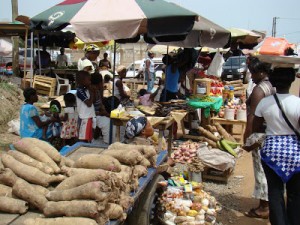Ghana inflation rate for April 2020 rises to 10.6% – highest in eight months
 Ghana’s inflation rate for the month of April 2020 has risen to 10.6 per cent, 2.8 percentage points higher than the month of March. This is the highest since the Consumer Price Index (CPI) was rebased in August 2019.
Ghana’s inflation rate for the month of April 2020 has risen to 10.6 per cent, 2.8 percentage points higher than the month of March. This is the highest since the Consumer Price Index (CPI) was rebased in August 2019.
It should be noted that the data for the CPI and rate of inflation was collected during the partial lockdown that was enforced in the Greater Accra and Greater Kumasi areas from March 30 to April 20, 2020 as parts of measures to curb the global pandemic that has infected more than four million people in the world, the coronavirus disease (COVID-19). In Ghana as at May 14, 5,408 people have been infected by the disease. The Greater Accra and Ashanti Regions have the highest infection rates. Accra recorded 4,147 and Ashanti recorded 726.
According to the Ghana Statistical Service, month-on-month inflation between March and April was 3.2 per cent.
“These are highest recorded year-on-year and month-on-month inflation rates since the CPI rebasing in August of last year. Only two of the thirteen divisions had higher than average inflation rates, food and non-alcoholic beverages (14.4 per cent) and housing, water, electricity, and gas (11.2 per cent), the Service said in a press release copied to ghanabusinessnews.com.
It indicated that the food and non-alcoholic beverages division recorded a year-on-year inflation rate of 14.4 per cent. This it said, is six percentage point higher than March 2020 (8.4 per cent) and 6.5 percentage points higher than the average food inflation rate recorded in the previous eight months, which was 7.9 per cent.
This the Service explains, translates to food being the predominant driver of year-on-year inflation.
It states that food contributed 59.6 per cent of the year-on-year inflation in April 2020. In the previous eight months this contribution was on average 44.1 per cent. Month-on-month food inflation stood at 6.4 per cent, meaning that between March 2020 and April 2020 the average price level of food and non-alcoholic beverages increased by 6.4 per cent. Food is also the predominant driver of month-on-month inflation, it added.
The Service explains further that within the food division, vegetables (+37 per cent) and fruits and nuts (+ 20.5 per cent) were the subclasses with the highest rates of inflation for both year-on-year and month-on-month inflation.
It states that within the housing, water, electricity, and gas division (+11.2 per cent), the subclasses ‘solid fuels (16.7 per cent)’ and ‘materials for the maintenance and repair of dwelling which was 13.1 per cent’ recorded the highest inflation rates.
The overall year-on-year inflation at the regional level, ranged from 2.3 per cent in the Upper East Region to 15.1 per cent in Greater Accra, the Service said.
BY Emmanuel K. Dogbevi
